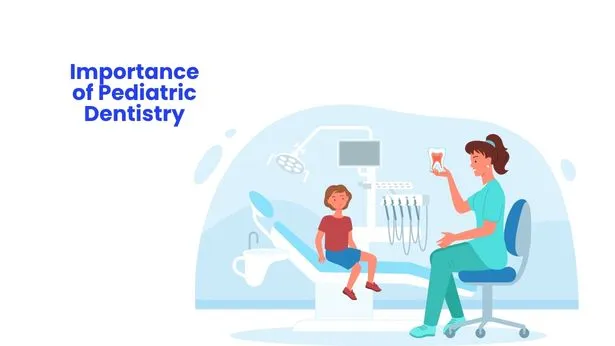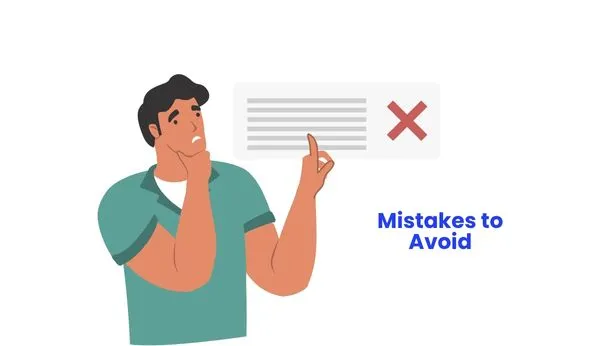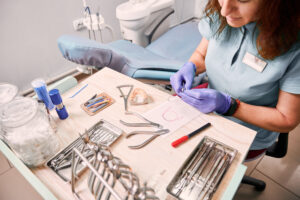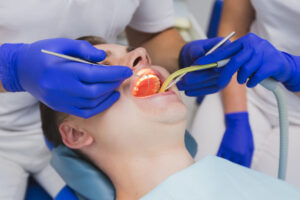How to Transition from General to Pediatric Dentistry in 2025
Making the transition from general to pediatric dentistry takes guts. Maybe you’ve hit a wall with general practice. Maybe working with children just speaks to you. Either way, this shift offers something different: a tighter focus, a deeper purpose, and a whole new set of challenges and rewards. Especially with how the field is shifting in 2025, it’s a timely career move worth exploring.
Why Consider Pediatric Dentistry?

Pediatric dentistry isn’t just “smaller teeth.” It’s a totally different mindset. You’re not only fixing cavities you’re shaping a kid’s relationship with oral health for life. That’s a big deal.
Here’s what this career gives you:
- ●Real connection with patients and families
- ●A respected role with a clear specialty
- ●A market with steady and growing demand
- ●More structured hours, less late-night dental chaos
If working with kids lights you up, this field is a powerful shift.
Creating a Pediatric Dentistry Career Path
Understanding the pediatric dentistry career path means knowing the steps—and the reality behind them.
Step 1: Gut Check
- ●Can you stay cool when a child screams in the chair?
- ●Are you patient enough to explain the same thing ten different ways?
- ●Do you genuinely enjoy making kids laugh while cleaning their teeth?
If not, pump the brakes. This path is rewarding, but it’s not a shortcut.
Step 2: Licensing and Education Requirements
In the U.S., for example, the route looks like this:
- ●Enroll in a CODA-accredited two-year pediatric dentistry residency
- ●Pass the board exam with the American Board of Pediatric Dentistry
If you’re outside the U.S., the process may differ, so check your local dental authority.
Step 3: Applying to a Program
Most pediatric residencies are competitive. Stand out by having:
- ●Solid grades and board scores
- ●Great letters of recommendation
- ●Actual pediatric dental experience
Interview performance also matters. Don’t fake enthusiasm. They can tell.
Step 4: Complete Focused Training for Pediatric Dentists
This is where you go from dentist to specialist. In residency, you’ll learn:
- ●Child psychology and behavior strategies
- ●How to use sedation safely
- ●Managing oral development stages
- ●Dealing with medically fragile or special-needs children
- ●Pediatric pharmacology and early orthodontics
Steps to Begin Your Kids Dentistry Specialization 2025
The kids dentistry specialization 2025 scene is changing. New tech, higher expectations, and a new generation of parents. Here’s how to prepare:
1. Spend time: Spend real time in a pediatric dental office. Watch how they speak to nervous kids. See how they calm anxious parents. Get a feel for the daily pace.
2. Take Targeted CE Courses: Start with continuing education focused on:
- ●Pediatric trauma care
- ●Sedation practices
- ●Behavioral techniques
This builds your skill set and strengthens your application.
3. Volunteer or Work in Pediatric Settings: The more real experience you get, the more confident you’ll be. Look for roles in school programs, mobile dental units, or nonprofit clinics.
4. Budget and Plan: Talk to a financial advisor. Ask about:
- ●Loans
- ●Grants for underserved communities
- ●Employer funding (if you’re returning to a larger group practice later)
- 5. Emotional & Mental Shift: This transition isn’t just academic. It’s emotional too.
You’ll need to:
- ●Adapt your communication style
- ●Ditch cold clinical language for kid-friendly talk
- ●Learn to engage parents without overexplaining
Some days, you’ll deal with crying toddlers, stressed-out moms, and complex health issues. Other days, you’ll make a kid laugh so hard they forget they’re in a dentist’s chair.
Also Read: Why Use a Board Certified Pediatric Dentist
Technology and Tools for 2025
In kids dentistry specialization 2025, tech matters:
- ●Behavior-monitoring AI to track anxiety in real time
- ●Virtual reality goggles for distraction therapy
- ●Gentle lasers that mean fewer drills and less trauma
Mastering these tools helps you stand out and connect better with modern families.
Common Mistakes to Avoid

- ●Thinking pediatric is easy.
- ●Skipping live experience. Watching videos doesn’t cut it.
- ●Underestimating networking. Many residency spots go to candidates with strong mentor backing.
- ●Forgetting the business side. Kids’ dentistry requires different layout, marketing, and scheduling logic.
Final Call on Transition from General to Pediatric Dentistry
The transition from general to pediatric dentistry is more than a career change. It’s a lifestyle shift. It takes training, emotional stamina, and a love for the unpredictable nature of working with kids.
Ready to Make the Move? Start small: shadow, volunteer, take a course. If this path is calling, don’t sit on it. Pediatric dentistry is growing, and so is the need for compassionate, well-trained professionals. Pediatric dentist headhunters are actively seeking motivated candidates in 2025. Contact Hire Smiles to find the right opportunity for your future.
FAQs on General to Pediatric Dentist
Q1. How long does it take to specialize in pediatric dentistry?
It usually lasts 2–3 years with residency and board exams.
Q2. Is pediatric dentistry harder than general?
Not harder, just different. It’s about behavior, not just procedures.
Q3. Are job opportunities good for pediatric dentists in 2025?
Yes. Especially in smaller towns and areas with limited pediatric providers.
Q4. Do I need to close my general practice to specialize?
Not necessarily. Some programs offer part-time or flexible formats.
Q5. Can a general dentist legally treat kids?
Yes, but pediatric dentists are trained for more complex or sensitive cases.
Q6. Is online training available?
Some CE is online. Residency must be in-person.
Q7. Will I lose money while training?
You might earn less in the short term. But over time, pediatric specialists usually earn more.
Q8. Is working with kids emotionally draining?
Yes, sometimes. But it’s also incredibly fulfilling when you earn their trust.
Related Article: Why Pediatric Dentistry Is a Great Career Choice





